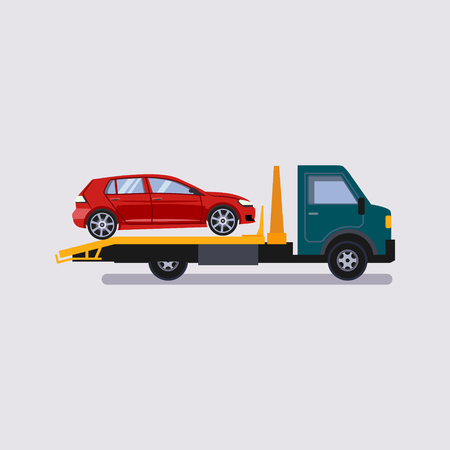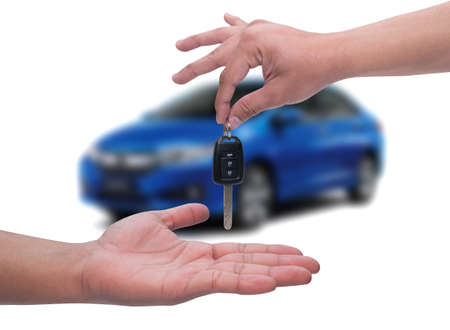Introduction to Uninsured and Underinsured Motorist Coverage
When you hit the open road in America, there’s an expectation that everyone behind the wheel is carrying enough insurance to cover damages if things go wrong. Unfortunately, that’s not always the case. This is where uninsured motorist (UM) and underinsured motorist (UIM) coverage step in, acting as essential safeguards for responsible drivers. In simple terms, UM coverage helps protect you if you’re in an accident caused by a driver who doesn’t have any insurance at all—a surprisingly common issue given millions of Americans drive uninsured each year. UIM coverage, on the other hand, kicks in when the at-fault driver’s insurance isn’t enough to cover your medical bills or car repairs. These coverages matter because even though auto liability insurance is required in most states, minimum limits are often too low to handle real-world costs after a serious accident. In the U.S., where medical expenses can skyrocket and legal processes can be lengthy, having both UM and UIM coverage could be the difference between a manageable situation and financial hardship. Understanding these policies isn’t just about following the law; it’s about protecting yourself and your loved ones from unexpected gaps that many drivers overlook.
2. How Each Coverage Works: Real-World Scenarios
Understanding how Uninsured Motorist (UM) and Underinsured Motorist (UIM) coverages work in practical situations is essential for every driver. Let’s break down each coverage with real-world examples, so you know what to expect if you’re ever involved in an accident with an uninsured or underinsured driver.
Uninsured Motorist Coverage: When the Other Driver Has No Insurance
Picture this: You’re driving home from work when another car runs a red light and hits your vehicle. After exchanging information, you learn the other driver has no insurance at all. In this scenario, your UM coverage steps in to help pay for your medical bills, lost wages, and sometimes even property damage (depending on your policy). Without UM coverage, you’d likely be paying out of pocket or facing a long legal battle to recover damages.
Example:
Susan is rear-ended by a driver who flees the scene. The police later confirm the other driver is uninsured. Susan’s UM coverage pays for her injuries and car repairs, minus her deductible.
Underinsured Motorist Coverage: When the Other Driver’s Insurance Isn’t Enough
Now imagine another situation: You’re involved in a crash caused by a driver who carries only the state minimum liability insurance—let’s say $25,000. Your total medical expenses and car repair costs add up to $50,000. The other driver’s insurance will pay up to their limit, but that leaves you $25,000 short. This is where UIM coverage kicks in, covering the gap up to your policy limits.
Example:
James suffers serious injuries in an accident caused by an underinsured driver. The at-fault party’s insurance covers $15,000, but James’s total losses are $40,000. His UIM policy pays the remaining $25,000 (after any applicable deductibles).
Quick Comparison Table
| Coverage Type | When It Applies | What It Pays For | Real-World Example |
|---|---|---|---|
| Uninsured Motorist (UM) | At-fault driver has no insurance or is unidentified (hit-and-run) | Bodily injury, sometimes property damage | Your car is hit by a driver with no insurance; your UM pays medical & repair costs |
| Underinsured Motorist (UIM) | At-fault driver has some insurance but not enough to cover your losses | The difference between at-fault party’s insurance payout and your total damages | Your injuries exceed the at-fault drivers limits; your UIM covers the remainder |
Refusal Alert:
If you don’t have either UM or UIM coverage on your policy and get hit by an uninsured or underinsured driver, your insurer will likely deny any related claim—leaving you responsible for all expenses. Always review your policy details carefully!

3. Key Differences Between Uninsured and Underinsured Motorist Coverage
If you’re trying to decide between uninsured motorist (UM) and underinsured motorist (UIM) coverage, it’s essential to understand what each does—and doesn’t—protect you from. Both coverages help if you’re hit by someone who can’t fully pay for your injuries or damages, but the specifics matter.
Uninsured Motorist Coverage: When the Other Driver Has No Insurance
Picture this: You’re stopped at a red light in Los Angeles, and suddenly another driver rear-ends you. When you exchange information, you discover they don’t have any auto insurance at all. This is exactly when UM coverage kicks in—it covers your medical bills, lost wages, and sometimes property damage when the at-fault driver is completely uninsured. In other words, it steps in as if the other driver had the required liability insurance but didn’t.
Key Point:
UM coverage is triggered only when the at-fault driver has zero insurance or is a hit-and-run driver that can’t be identified.
Underinsured Motorist Coverage: When the Other Driver Doesn’t Have Enough Insurance
Now imagine a different situation. You’re involved in an accident in Texas, and the other driver has insurance—but only carries the state minimum liability limits. Your medical bills are $60,000, but their policy only covers $30,000. UIM coverage helps pay the difference up to your policy limits. It’s designed for cases where another driver’s insurance isn’t enough to cover all your expenses after an accident.
Key Point:
UIM coverage is used when the at-fault driver has some insurance, but not enough to meet your actual costs.
Clear-Cut Examples: How They Differ in Real Life
- UM Example: A hit-and-run driver sideswipes your car and disappears. Police can’t find them, so you file a claim through UM coverage.
- UIM Example: A distracted driver with low-limit insurance causes a multi-car pileup on the freeway. Their insurance pays out, but your hospital stay costs more than their policy covers—UIM fills that gap.
Watch Out for Policy Limits!
Both UM and UIM coverages have maximum payout limits defined by your policy. If your damages exceed those limits, you’ll be responsible for the rest out of pocket—so review your policy carefully and consider what level of protection makes sense for you.
4. Areas of Overlap: When Both Coverages Can Help
While uninsured motorist (UM) and underinsured motorist (UIM) coverage are distinct, there are real-world scenarios where both can come into play, offering crucial protection for American drivers. Understanding these overlaps is key to ensuring you’re not left with unexpected bills after an accident.
When Do UM and UIM Coverage Overlap?
The overlap usually occurs in multi-vehicle accidents or in cases where the at-fault driver has some insurance, but not enough to cover all damages. For instance, if you’re hit by a driver whose policy limit is too low to pay for your medical expenses and property damage, your UIM coverage can bridge the gap. If the at-fault driver has no insurance at all, your UM coverage steps in. In certain states, these coverages may be bundled or triggered together depending on how your policy is written and the specific circumstances of the crash.
Example Scenario
Imagine you’re rear-ended at a stoplight. The other driver has only the state minimum liability insurance—which covers $15,000 in damages. Your hospital bills alone are $40,000. Here’s how your policies could apply:
| Situation | Other Driver’s Insurance Pays | Your UIM/UM Pays |
|---|---|---|
| At-fault driver is uninsured | $0 | Your UM pays up to your policy limit |
| At-fault driver is underinsured ($15,000 limit) | $15,000 | Your UIM pays the difference up to your policy limit |
Where Coverage Limits Intersect
The amount your UM or UIM policy will pay depends on your chosen coverage limits. If both types of coverage are part of your policy, they won’t “stack” infinitely; instead, your insurer will subtract what’s paid by the other driver’s policy from your total limit. For example, if you have $50,000 in UIM coverage and the at-fault driver pays $15,000, you could receive up to $35,000 from your own insurer—covering you up to your chosen protection level but not more.
Key Reminder: Don’t Assume Full Payouts
Insurance companies strictly interpret policy language and limits. Even if both UM and UIM apply in one event, you’ll only receive compensation up to your stated limits—not double-dipping between them. This means reviewing your current limits is essential to ensure adequate protection for both scenarios.
5. Common Exclusions and Denial Risks
Understanding the Fine Print in UM/UIM Coverage
While Uninsured Motorist (UM) and Underinsured Motorist (UIM) coverages are designed to protect you when another driver doesn’t have adequate insurance, these policies come with several exclusions and potential traps that can lead to claim denials. Understanding these is crucial before you need to file a claim.
Typical Policy Exclusions
Most UM/UIM policies in the US exclude certain situations from coverage. For example, injuries sustained while driving a vehicle you own but haven’t insured under your policy are commonly excluded. Claims involving intentional acts, racing, or criminal activity also usually fall outside coverage. In some states, using a car for rideshare or delivery services may void your UM/UIM protection unless you have additional endorsements.
Fine Print Traps That Can Lead to Denial
Many denial risks are buried in the policy fine print. One common pitfall is missing deadlines—some states require that you notify your insurer of an accident within days or weeks, not months. Another frequent issue is failing to cooperate fully during the claims investigation, such as not providing requested documentation or medical records. Disputes about who was at fault can also trigger denial if the insurer believes you contributed to the accident more than allowed by your state’s comparative negligence rules.
Real-Life Claim Denial Scenarios
Consider this example: A driver files a UIM claim after being hit by someone with low liability limits. The insurer denies the claim because the injured driver didn’t seek medical attention immediately after the crash—a requirement hidden in their policy language. In another case, someone borrows a friend’s uninsured car and gets into an accident; their own UM coverage denies payment since the borrowed car wasn’t listed on their policy. These scenarios highlight how important it is to read your policy carefully and ask questions up front so you don’t face surprises when you need help most.
In short, always review your UM/UIM policy for exclusions and reporting requirements, and document everything thoroughly after an accident. Knowing where insurers draw the line can help you avoid costly coverage gaps and unexpected denials.
6. Choosing the Right Coverage for Your Needs
When it comes to deciding between Uninsured Motorist (UM) and Underinsured Motorist (UIM) coverage, there’s no one-size-fits-all answer—your choice should be based on your driving habits, financial situation, and the specific requirements in your state. Here’s how you can make an informed decision:
Assess Your Risk Factors
If you frequently drive in areas with high rates of uninsured drivers or where minimum liability requirements are low, opting for both UM and UIM coverage is a smart move. For example, drivers in states like Florida or Mississippi, which have higher percentages of uninsured motorists, face greater risk if hit by someone without insurance.
Review State Requirements
Some states require UM coverage, while others make both UM and UIM optional. Check your state’s minimums before making decisions—opting for only the legal minimum may leave you exposed. Remember, insurance laws vary widely; for instance, Illinois mandates UM coverage but not UIM, while Texas requires both options be offered when you buy auto insurance.
Consider Your Financial Protection
Ask yourself: Could you cover medical expenses or vehicle repairs out-of-pocket if the at-fault driver has no or insufficient insurance? If not, higher limits on UM/UIM coverage can provide peace of mind and critical financial protection. Don’t just pick the lowest premium—think about what would happen in a serious accident scenario.
Practical Steps to Take
- Request Quotes: Ask your insurance agent for quotes at different coverage levels to see how much more comprehensive protection would actually cost.
- Bundle Coverage: Sometimes bundling UM and UIM with other policies can result in discounts.
- Update Regularly: Review your policy annually or after major life changes—moving to a new state, buying a new car, or changes in your commute can all affect your needs.
Refuse to Gamble on Minimums
Many drivers regret skimping on coverage after an accident occurs. Insurance companies may deny claims that exceed your selected limit—even if the costs are legitimate. Protect yourself by choosing coverage amounts that reflect real-world risks, not just legal requirements.
Ultimately, taking time to compare options and consider your personal situation will ensure you’re prepared—not surprised—if you ever need to file a claim under UM or UIM coverage.


